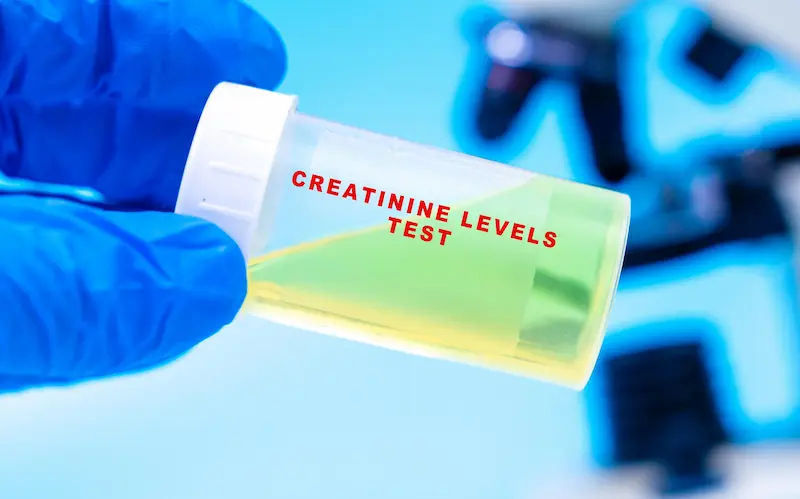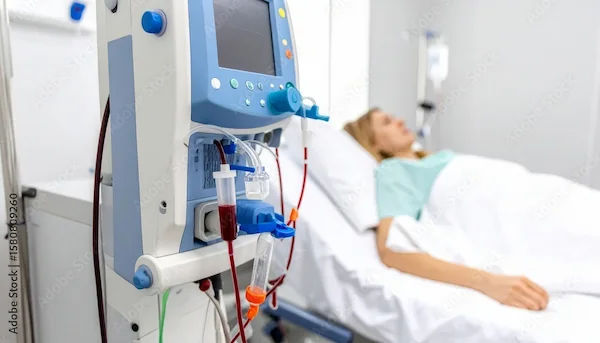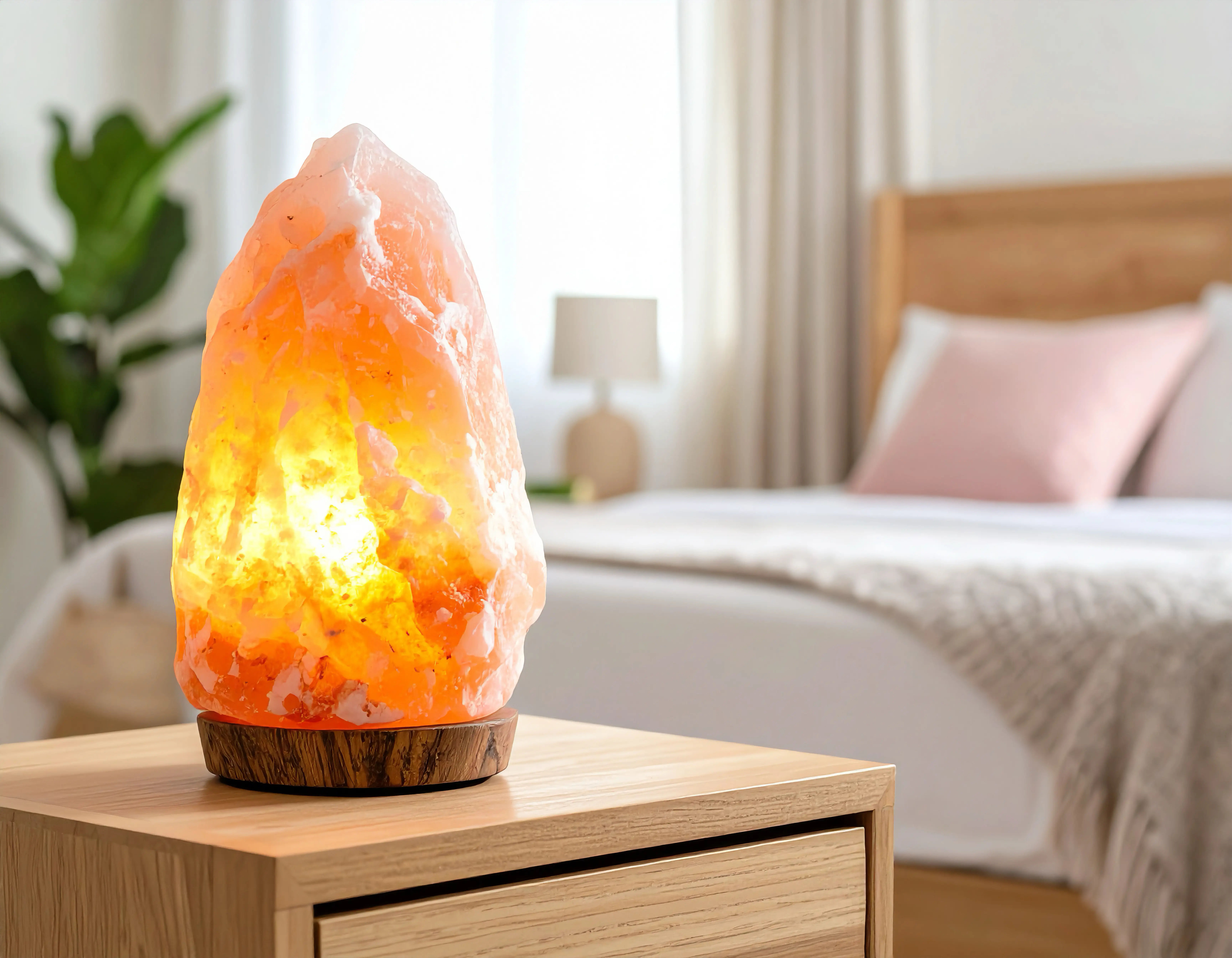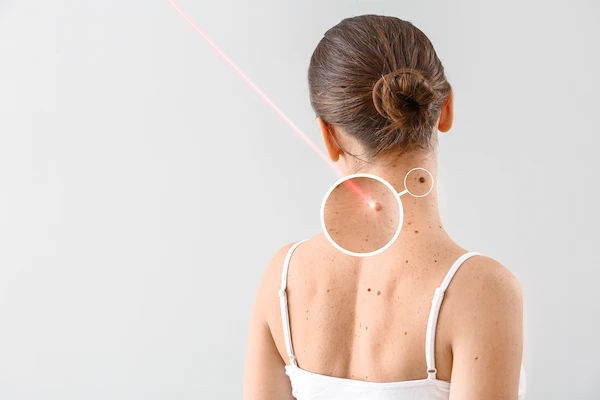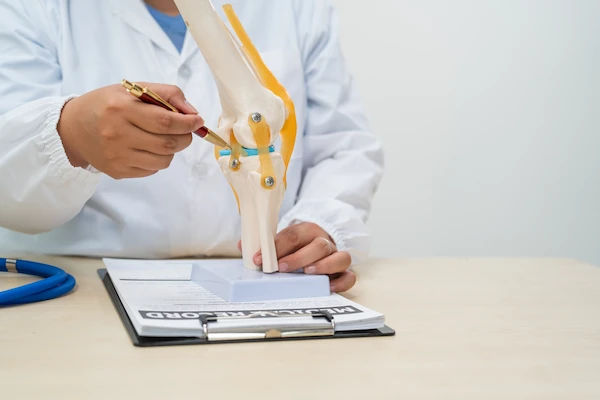What Leads To What Testicular Pain?
Explore the common and serious causes of testicular pain, from minor injuries and infections to torsion and other conditions. Learn about symptoms and when to see a doctor.

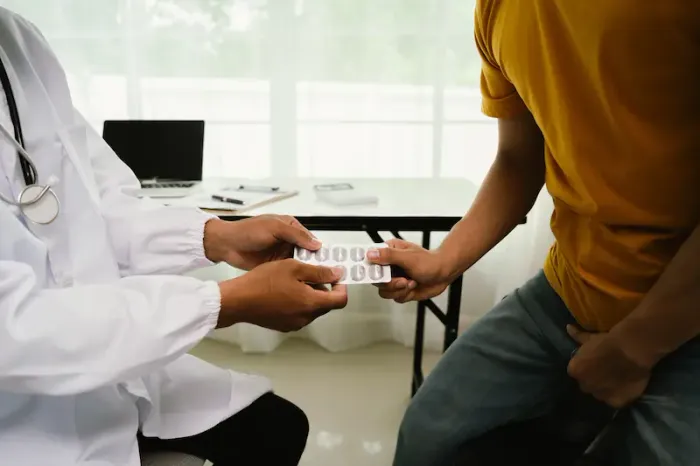
Introduction
Testicular pain can feel alarming—especially when it comes on suddenly or radiates into the groin, lower abdomen, or back. The causes range from common and treatable problems like infections to emergencies like testicular torsion, where blood flow is cut off and time matters. Understanding what leads to what testicular pain helps you recognize patterns, decide when to seek urgent care, and know what to expect from diagnosis and treatment.
In this guide, we’ll walk through the major causes of testicular pain by how they start (sudden vs gradual), the symptoms they travel with (fever, urinary burning, swelling), and what makes pain better or worse (standing, sitting, ejaculation, or exercise). You’ll learn the red flags that need same-day attention, what doctors look for during exams and ultrasound, and evidence-based treatments—from antibiotics for epididymitis to surgery for torsion or hernias. We’ll also cover self-care, prevention, and what to do if pain becomes chronic. If symptoms persist beyond two weeks, consult a doctor online with Apollo24|7 for further evaluation; and when lab tests are needed, Apollo24|7 offers convenient home collection for urine and STI testing.
Quick Overview: Why Testicular Pain Deserves Prompt Attention
Testicular pain is often benign, but sometimes it’s a medical emergency. The scrotum houses the testicles, epididymis, and spermatic cord (containing the blood supply). Any event that impairs blood flow—like testicular torsion—can cause rapid damage. That’s why medical sites emphasize the “acute scrotum” as a time-sensitive condition.
Common causes include:
• Infections (epididymitis and orchitis), often bacterial or STI-related in sexually active men.
• Varicocele (dilated veins), hydrocele (fluid collection), spermatocele (cyst), and inguinal hernias.
• Referred pain from kidney stones or spinal/nerve sources.
• Trauma from sports or accidents.
• Less commonly, tumors; cancer often presents as a painless lump but can coexist with discomfort.
Unique insight:
Think of testicular pain like a “pattern puzzle.” Sudden, severe pain, especially with nausea, is more suspicious for torsion. A dull ache that worsens with standing hints at varicocele. Pain with fever and urinary symptoms points toward infection. Mapping your pattern to likely causes helps you act fast when it matters most.
If you’re uncertain, err on the side of urgent evaluation—especially for sudden, severe, one-sided pain. If you’re assessing non-urgent, low-grade discomfort, a brief period of rest, scrotal support, and OTC pain relief may help. If it doesn’t improve, book a physical visit to a doctor with Apollo24|7.Consult a Top General Physician
When Testicular Pain Is an Emergency
Red flags that need same-day care
Seek immediate care (ER or urgent clinic) if you have:
• Sudden, severe, one-sided testicular pain
• A high-riding or abnormally positioned testicle
• Nausea/vomiting with scrotal pain
• Rapid swelling, severe tenderness, or fever/chills
• Recent trauma with persistent pain or swelling
• Pain that doesn’t improve within a few hours, especially in adolescents and young adults.
Testicular torsion: warning signs, time window, and outcomes
Testicular torsion occurs when the spermatic cord twists, cutting off blood supply. It’s most common in teens and young adults, but can occur at any age. Typical features include sudden severe pain, scrotal swelling, nausea/vomiting, and an elevated testicle; the cremasteric reflex may be absent. Torsion is a “golden hour” condition—surgical detorsion ideally within 4–6 hours gives the best chance of saving the testicle; risk of irreversible damage rises sharply after 8–12 hours. The key message: don’t wait to see if it gets better—get evaluated immediately.
Severe infections and complications
Epididymo-orchitis can progress to abscess or sepsis if untreated, particularly in older adults or those with urinary issues. Fever, significant swelling, and systemic symptoms warrant urgent care. Untreated infections can impact fertility in some cases. If you have intense scrotal pain with fever or signs of systemic illness, seek same-day medical attention.
What Leads to Sudden Testicular Pain
Torsion
As above, torsion is the top emergency. It can occur spontaneously, after minor trauma, or during sleep. It often presents without urinary symptoms. Ultrasound with Doppler assesses blood flow; if torsion is suspected clinically, surgery should not be delayed for imaging [5]. Unique insight: Don’t rely on “home tests” (like lifting the scrotum or waiting for warmth to relieve pain)—these are unreliable and can dangerously delay care.
Epididymitis/orchitis
Epididymitis is inflammation/infection of the epididymis; orchitis involves the testicle. In sexually active men under 35, STIs (chlamydia, gonorrhea) are common causes; in older men, urinary bacteria predominate. Pain may develop over hours to days, sometimes with fever, urinary burning, frequency, or discharge. The scrotum is tender and swollen; pain can improve with scrotal elevation (not a definitive sign). Treatment typically includes antibiotics targeted to suspected pathogens, rest, and scrotal support.
Long-tail keywords to note: epididymitis symptoms vs torsion; orchitis vs epididymitis.
Trauma and rupture
A direct blow (sports, cycling, accidents) can cause hematoma, rupture, or torsion. Persistent severe pain or swelling after trauma needs urgent evaluation and ultrasound. Protective athletic cups reduce risk.
Kidney stones and referred pain
Stones in the ureter can cause flank-to-groin pain that radiates to the testicle on the same side, often with hematuria or urinary urgency. Pain tends to wax and wane in waves (colicky). While the testicle itself may be normal on exam, imaging and urinalysis can confirm the source.
Long-tail keyword: kidney stone pain referred to testicle.
What Leads to Dull, Achy, or Intermittent Pain
Varicocele
Varicoceles are dilated scrotal veins, more common on the left, often described as a “bag of worms” on exam. Pain is typically a dull ache or heaviness that worsens with standing or later in the day and improves when lying down. Varicoceles can be associated with fertility issues. Treatments range from supportive care (scrotal support, NSAIDs) to procedures (embolization or surgical ligation) if pain or fertility concerns persist.
Inguinal hernia
A hernia occurs when tissue pushes through a weak spot in the abdominal wall. You might notice a groin bulge, discomfort with lifting/coughing, and referred testicular pain. Pain increasing with strain suggests hernia; strangulation (severe pain, tender bulge, vomiting) is an emergency. Elective repair often resolves symptoms.
Hydrocele and spermatocele
Hydroceles (fluid around the testicle) usually cause painless swelling, though they can feel heavy or achy, especially after activity. Spermatoceles (epididymal cysts) are also typically painless but can cause discomfort if large. Ultrasound clarifies the diagnosis. Management ranges from observation to surgical repair if symptomatic.
Nerve-related pain and pelvic floor factors
Entrapment of ilioinguinal/genitofemoral nerves, lumbar spine issues, or pelvic floor muscle tension can cause testicular or groin pain, often worse with sitting or certain positions. Physical therapy, posture/ergonomics, and targeted nerve pain treatments can help.
Unique insight: If your testicular pain is triggered by prolonged sitting and improves with hip mobility and core engagement, nerve or pelvic floor contributions may be key.
Pain Patterns by Activity and Life Events
After exercise or standing long hours
• Worse with standing, heavy lifting, or late in the day: think varicocele or hernia.
• After heavy lifting with a new groin bulge: suspect hernia; schedule evaluation.
• Post-sports soreness that resolves with rest/support: consider muscle strain or minor scrotal strain. If swelling/pain persist, seek care.
After sex, ejaculation, or vasectomy
• Pain after ejaculation may stem from epididymal congestion, prostatitis, or pelvic floor tension; hydration, warm baths, and avoiding prolonged abstinence can help in mild cases.
• Testicular pain after vasectomy usually improves in days to weeks; persistent pain (post-vasectomy pain syndrome) is uncommon but treatable with medications, nerve blocks, pelvic floor therapy, or, rarely, surgery. If your condition does not improve after trying these methods, book a physical visit to a doctor with Apollo24|7.
During sitting or cycling
• Cycling can compress perineal nerves, leading to numbness or ache. Adjusting saddle fit, using padded shorts, and posture changes can reduce pressure. Persistent pain with sitting may suggest nerve involvement; consider a trial of ergonomic changes and consult a clinician.
Testicular Pain with Other Symptoms: What That Points To
With fever, burning urination, discharge
• This triad suggests infection (epididymitis/orchitis), especially in sexually active adults or those with recent urinary procedures. Testing may include urine analysis, urine culture, and STI tests (NAAT for chlamydia/gonorrhea) [1][4]. Apollo24|7 offers home collection for urine and STI tests when appropriate.
With back or flank pain
• Colicky flank-to-groin pain with nausea/urinary changes suggests a kidney stone. Back pain with neuropathy or spinal issues may also refer to the scrotum. Imaging helps differentiate.
With a lump or swelling
• Painless, firm testicular lump suggests tumor—prompt ultrasound is essential.
• Achy heaviness with a “bag of worms” feel suggests varicocele.
• Swelling that transilluminates suggests hydrocele.
Do not delay evaluation of any new lump or persistent swelling.
How Doctors Diagnose Testicular Pain
History and physical exam: what clinicians look for
• Clinicians assess onset (sudden vs gradual), severity, associated symptoms (fever, urinary symptoms, nausea), history of trauma, sexual history, and recent activity. On exams, they check testicular position, tenderness, swelling, cremasteric reflex, hernia signs, and skin changes. A thorough exam can often narrow causes quickly.
Urine, STI tests, and blood work
• Urinalysis and urine culture can detect infection or blood (stones).
• STI tests (chlamydia/gonorrhea NAAT) are standard if risk factors are present.
• In certain cases, CBC or inflammatory markers may be ordered.
• If indicated, Apollo24|7 offers a convenient home collection for these lab tests.
Ultrasound and Doppler: ruling in/ruling out torsion
• Scrotal ultrasound with Doppler assesses structure and blood flow. It’s highly useful for diagnosing torsion, epididymitis, varicocele, hydrocele, and masses [1][5]. If torsion is strongly suspected on exam, urgent surgery may proceed without waiting for imaging to avoid delays.
Evidence-Based Treatments by Cause
Torsion (surgical)
• Emergency surgery detorses the cord and fixes the testis (orchiopexy); the other side is typically fixed to prevent future torsion. Salvage rates are highest with rapid treatment (ideally within 4–6 hours).
Infections (antibiotics, STI care)
• Epididymitis/orchitis: antibiotics tailored to likely cause (e.g., STI coverage in younger, urinary pathogens in older), rest, scrotal support, NSAIDs, and follow-up to confirm improvement.
Partners may need evaluation/treatment for STIs to prevent reinfection. If symptoms persist beyond two weeks, consult a doctor online with Apollo24|7.
Varicocele, hernia, hydrocele (procedures vs watchful waiting)
• Varicocele: conservative care for mild pain; consider embolization or surgery if persistent pain or fertility issues.
• Inguinal hernia: elective repair relieves pain and prevents complications; urgent repair for strangulation.
• Hydrocele/spermatocele: observation if asymptomatic; surgery if large or painful.
Neuropathic pain and pelvic floor therapy
• For chronic orchialgia without structural cause, options include neuropathic agents (as prescribed), nerve blocks, pelvic floor physical therapy, and psychological pain strategies. A multidisciplinary approach often works best for persistent cases.
Unique insight: Keep a “pain diary” noting time, triggers (standing/sitting, ejaculation, exertion), associated symptoms, and response to support/meds. This helps your clinician identify patterns and tailor treatment.
Home Care and Self-Management: What Helps and What Doesn’t
Rest, scrotal support, cold/warm therapy, OTC pain relief
• Rest and scrotal elevation/support (supportive briefs or an athletic supporter) can reduce strain.
• Cold packs for the first 24–48 hours after minor strain or injury; warm baths may help muscle/pelvic floor tension.
• Over-the-counter pain relievers (e.g., ibuprofen or acetaminophen) as directed, unless contraindicated.
Hydration and gentle movement after acute rest to avoid stiffness.
When self-care is appropriate—and when it’s not
• Self-care is reasonable for mild, gradual aches without systemic symptoms or a known benign cause (e.g., mild varicocele discomfort). Do not rely on home care if you have sudden severe pain, fever, a new lump, recent trauma with swelling, or persistent symptoms. If self-care hasn’t improved symptoms in a few days, book a physical visit to a doctor with Apollo24|7.
What If the Pain Keeps Coming Back?
Chronic testicular pain (orchialgia): work-up and options
• Chronic pain (3+ months) can follow prior infections, trauma, surgery (including vasectomy), or arise without a clear cause. Evaluation rules out structural problems, hernia, stones, and nerve entrapment. Treatment may include NSAIDs, neuropathic medications, pelvic floor therapy, spermatic cord blocks, and in select cases microsurgical denervation. Addressing sleep, stress, and activity patterns is key.
Psychological stress and the pain cycle
• Stress amplifies pain perception and muscle tension—especially in the pelvic floor—creating a feedback loop. Mind-body approaches (breathing training, cognitive strategies) and graded activity can reduce flare-ups. Unique insight: Pair pelvic floor relaxation exercises with posture/hip mobility to ease nerve traction and reduce “sit-triggered” testicular pain.
Prevention and Everyday Habits
Safer sex and STI prevention
• Use condoms, get STI screening when indicated, and seek prompt care for urinary or genital symptoms. Rapid treatment of infections reduces pain duration and complications.
Ergonomics, athletic support, and core/pelvic health
• Use athletic support during sports; consider a protective cup in contact sports.
• Optimize workstation ergonomics and take standing/walking breaks to reduce nerve compression.
• Maintain hip/core strength and flexibility; address chronic cough/constipation to reduce hernia risk.
• Avoid prolonged straining; lift with proper technique.
Special Considerations
Children and teens
Any acute scrotal pain in children or teens should be treated as torsion until proven otherwise—seek emergency care. Do not delay.
Older adults and comorbidities
Older adults are more prone to urinary-tract-related epididymitis (due to prostate enlargement or catheterization) and hernias. Fever, severe swelling, or systemic illness warrants urgent care.
Cancer fears: what pain does and doesn’t mean
Testicular cancer often presents as a painless lump, firmness, or heaviness; pain can occur but is less typical. Any new lump or persistent swelling needs prompt ultrasound. Early detection leads to excellent outcomes.
Conclusion
Testicular pain can be unsettling, but a pattern-based approach helps you make safe, timely decisions. Sudden severe pain—especially with nausea, swelling, or a high-riding testicle—points toward torsion and needs immediate care. Gradual pain with fever or urinary changes suggests infection; antibiotics and supportive measures are effective for most people. Dull aches that worsen with standing often trace to varicocele, while hernias or kidney stones can cause groin or referred testicular pain. Not every ache is dangerous, but new lumps, persistent swelling, or pain that doesn’t settle with rest deserve prompt evaluation.
Diagnosis typically combines a focused history and exam with urine/STI tests and scrotal ultrasound with Doppler. Treatments range from simple measures and medications to procedures or surgery, depending on the cause. If you’re unsure where your symptoms fit, use the “what leads to what” cues in this guide—and when in doubt, seek urgent assessment. If your condition does not improve after trying self-care or if symptoms persist beyond two weeks, consult a doctor online with Apollo24|7 for further evaluation or book a physical visit. For necessary tests like urine analysis or STI screening, Apollo24|7’s home collection can make the process more convenient. The sooner you understand the cause, the faster you can get relief and protect long-term health.Consult a Top General Physician
Consult a Top General Physician

Dr. Rajib Ghose
General Physician/ Internal Medicine Specialist
25 Years • MBBS
East Midnapore
VIVEKANANDA SEBA SADAN, East Midnapore

Dr. Shesham Srinidhi
General Practitioner
5 Years • MD(physician)
Hyderabad
Apollo 24|7 Clinic, Hyderabad
(150+ Patients)

Dr. Vasanthasree Nair
General Practitioner
15 Years • MBBS
Angamaly
Apollo 24|7 Clinic - Kerala, Angamaly
(500+ Patients)
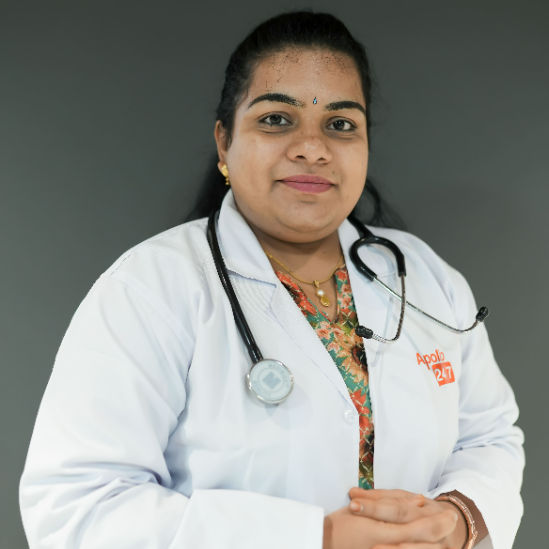
Dr. Siri Nallapu
General Practitioner
5 Years • MBBS
Hyderabad
Apollo 24|7 Clinic, Hyderabad

Dr. Ramya Hari
General Practitioner
18 Years • Medical Head & Family Physician, DG Shipping Approved Doctor, Panel Physician - UK Visa Medicals
Chennai
Apollo Medical Centre Kotturpuram, Chennai
Consult a Top General Physician

Dr. Rajib Ghose
General Physician/ Internal Medicine Specialist
25 Years • MBBS
East Midnapore
VIVEKANANDA SEBA SADAN, East Midnapore

Dr. Shesham Srinidhi
General Practitioner
5 Years • MD(physician)
Hyderabad
Apollo 24|7 Clinic, Hyderabad
(150+ Patients)

Dr. Vasanthasree Nair
General Practitioner
15 Years • MBBS
Angamaly
Apollo 24|7 Clinic - Kerala, Angamaly
(500+ Patients)

Dr. Siri Nallapu
General Practitioner
5 Years • MBBS
Hyderabad
Apollo 24|7 Clinic, Hyderabad

Dr. Ramya Hari
General Practitioner
18 Years • Medical Head & Family Physician, DG Shipping Approved Doctor, Panel Physician - UK Visa Medicals
Chennai
Apollo Medical Centre Kotturpuram, Chennai
More articles from General Medical Consultation
Frequently Asked Questions
1) Is sudden testicular pain always torsion?
Not always, but torsion is the most time-sensitive cause of sudden testicular pain on one side. Because delayed care can lead to loss of the testicle, treat sudden severe pain as an emergency until proven otherwise.
2) How can I tell epididymitis symptoms vs torsion?
Epididymitis often develops over hours to days, sometimes with fever, urinary burning, or discharge; pain may ease a bit with scrotal support. Torsion tends to be abrupt and severe, with nausea and an elevated testicle. Only an exam and ultrasound can confirm—seek urgent care if unsure].
3) Can a kidney stone cause pain in the testicle and lower abdomen?
Yes. Kidney stones commonly cause colicky flank pain that can radiate to the groin or testicle on the same side, sometimes with blood in the urine.
4) Does testicular cancer usually hurt?
Testicular cancer more often presents as a painless lump, firmness, or heaviness. Pain can occur but is less typical. Any new lump or persistent swelling requires prompt evaluation and ultrasound.
5) What helps a dull ache in the testicle after exercise?
Try rest, scrotal support, and OTC pain relief. Aches worse with standing may signal varicocele; a new bulge after lifting points to hernia. If pain persists or recurs, consult a clinician. If symptoms persist beyond two weeks, consult a doctor online with Apollo24|7.
